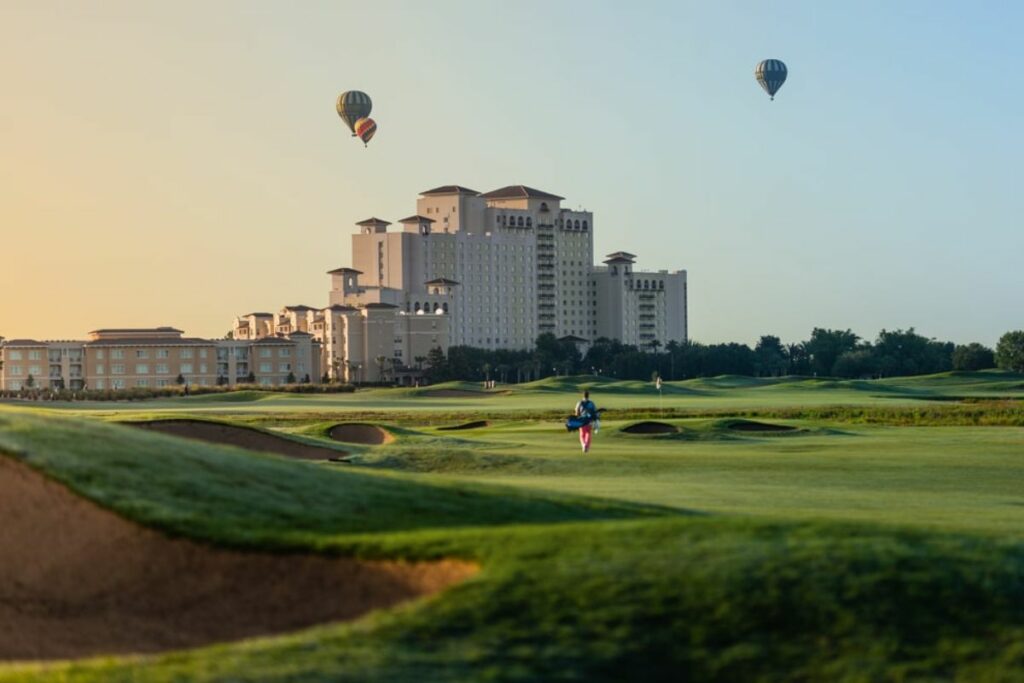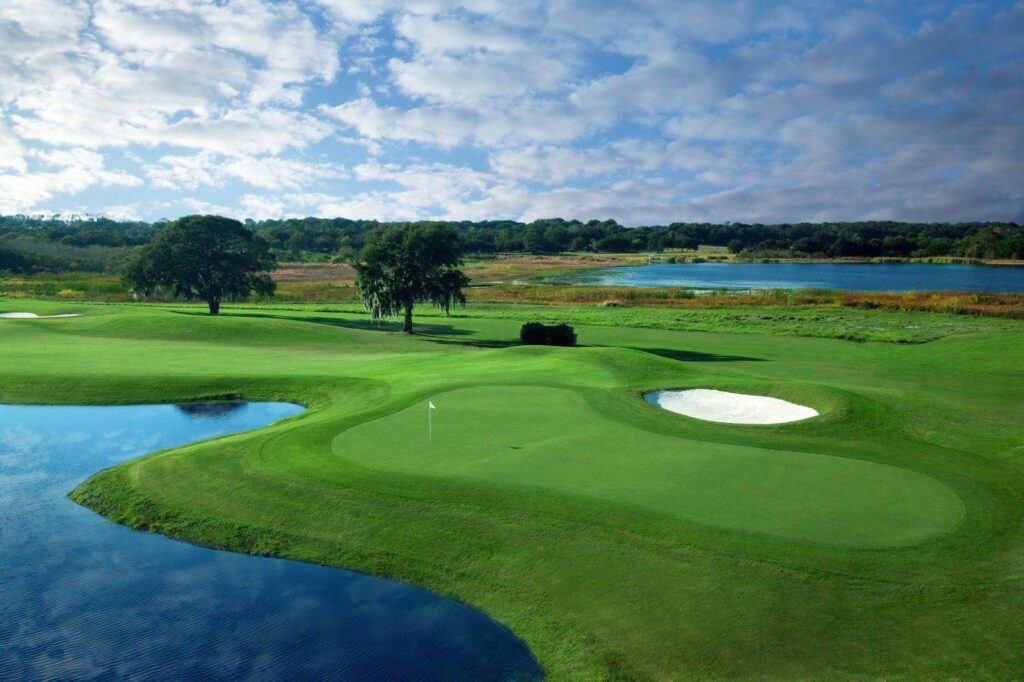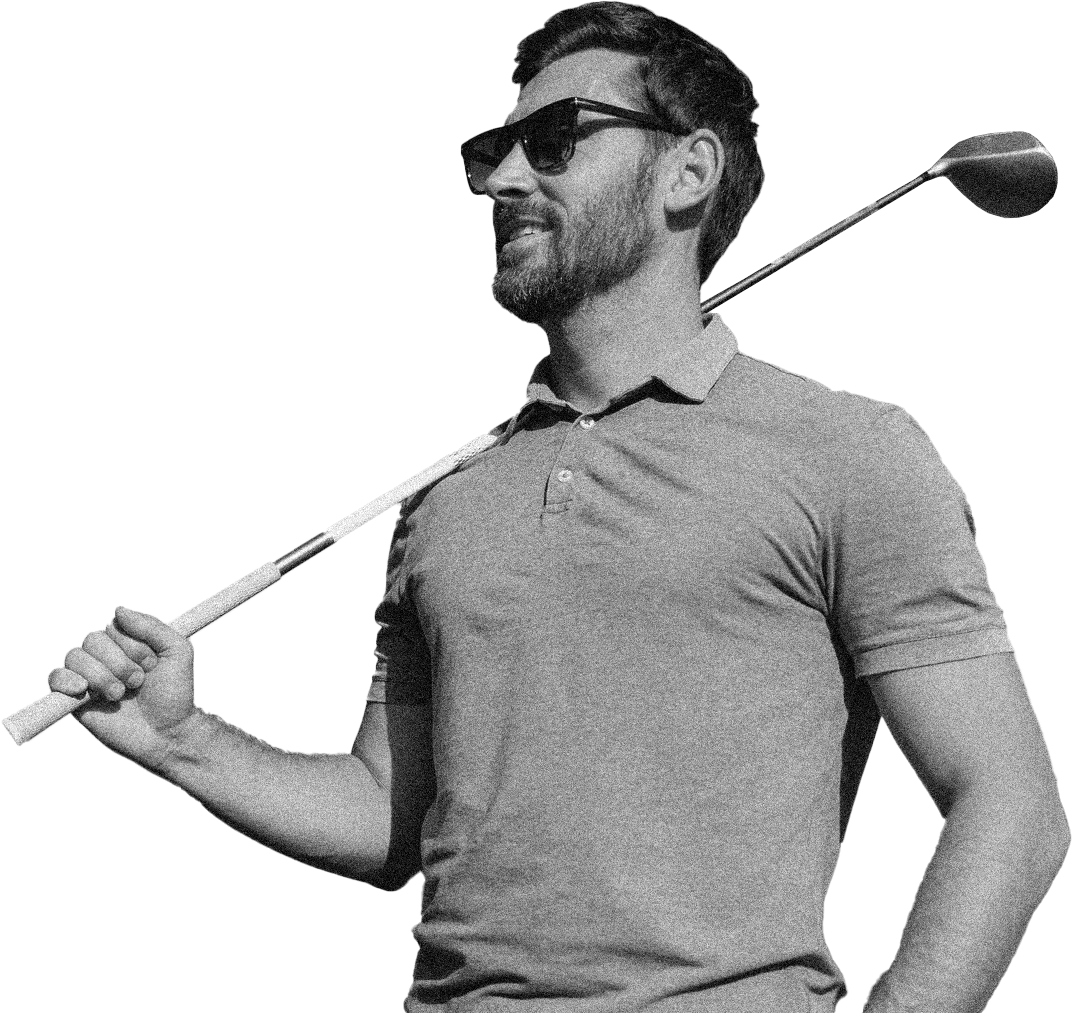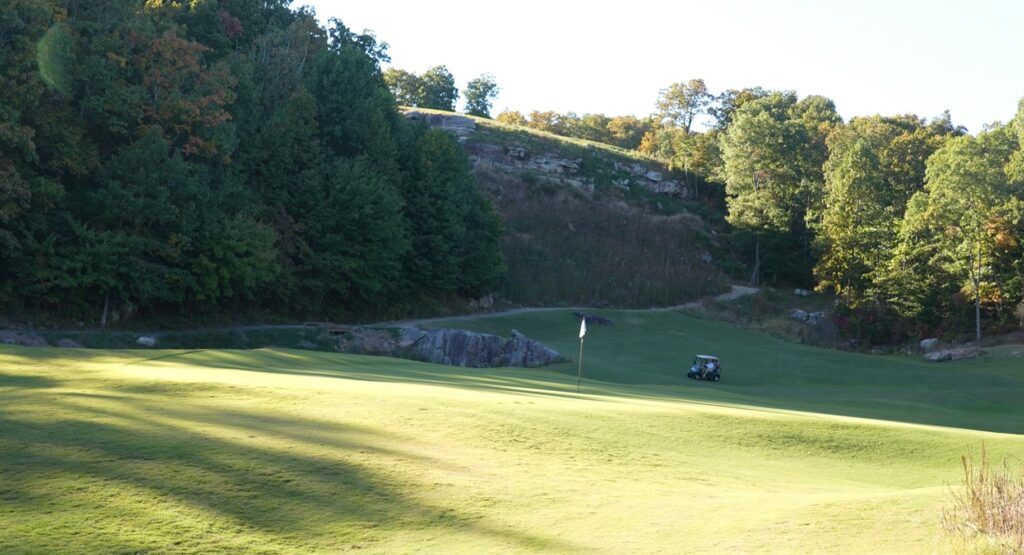Most golfers do not appreciate the creativity and effort golf course architects use to create a golf course. Having spoken to many golf course architects throughout my career I can tell you first hand, there’s a lot more that goes into designing a golf course than you think. What most golfers don’t realize is golf courses are built backwards. And you should play the course backwards to play your best golf.
As a golfer, if you use the same strategy the architect does to create your game plan at any golf course, you’ll understand the course better. When you learn to play the course backwards, you’ll see the clearest and most objective plan to play your best golf on any golf course. Learning to play the course backwards is what all our clients experience when attending golf lessons in Orlando, as well as golf schools Orlando that my academy conducts.
Why are Greens Built First?
Greens of a golf course are planned and built first, for three main reasons.
Drainage – without nature playing a major role in how excess water is drained from a green, a golf course can never offer great green surfaces. Sitting water on greens creates mold, disease, and invites infestation of unwanted creatures. Drainage is a must throughout the golf course. It is particularly important for greens to drain efficiently both by direction as well as seepage through its substructure. Greens that drain well typically have longer root systems which allow for healthier blades of grass. And are typically firmer and can roll faster.
Utility – the ability to run irrigation piping as well as the electrical lines to control the irrigation is important in the design of a golf course. The further away a green is from the irrigation source, the more irrigation pipe and the more electrical wire is buried beneath the ground. It’s not so much about the cost of the pipe and wiring. As much as it is ensuring all utility to and from the green can be maintained and stays in proper working order with little to no disruption to the rest of the course.
Access – it’s important that not only golfers can easily access green surfaces. But it’s even more important the golf course’s maintenance staff can access the green surfaces without disturbing the green complex that surrounds it. Difficulty accessing the green surface can unduly delay routine maintenance as well as make it more difficult for the golfer to access a green.
A golf course architect goes through multiple iterations of routing the holes on the property, keeping in mind the above 3 factors. Ultimately, identifying and utilizing the best 18 locations to build greens that allow for a fantastic routing of the course while allowing all 3 factors to exist harmoniously.
Looking Forward is not What it Seems to Be
World renowned architects have a way of shaping holes to create visual anomalies that draw your eye’s and mind’s attention. They are true artists of their craft, seeing shapes and contours of golf holes within a blank piece of property. Their ability to envision and craft a golf course, using the elements already in place on the property, can create situations that leaves you visually uncomfortable. The architect keeps this in mind while also considering the general tendencies of all golfers when creating your visual discomfort.
We’d find golf much easier to play if visually we are more comfortable. But at some point, you’d get bored playing golf if you were not visually challenged. It’s the architect’s job to provide you a visual challenge on every hole.
In a general sense, what you see looking forward towards a green isn’t necessarily what is truly in play on any golf hole. For instance, fairway bunkers with high front lips always invoke a fear in the wayward golfer’s drive. Water between you and the green will invoke fear, forcing you to make plans to not hit the water. But you still do. And trees blocking your way around a dog leg, no matter the height, forces you to sometimes play more aggressively than you should.
Things Disappear Looking Backwards
Let’s take the same 3 examples mentioned and now look backwards. Or in essence, let’s plan and play the course backwards.
Standing on a green looking backwards, the fairway bunker with the high front lip has disappeared. The water between where you stood on the tee or fairway and where you stand now on the green probably changed shape and size. It could possibly disappear as well. And the trees that prevented you from going around the dog leg now shape the fairway to show you where a best place tee shot will land.
What you see looking backwards from the green to the tee is not an anomaly. It’s a very real and dependable depiction of the hole, the way it was designed by the architect. And the strategy of the using the 2 phrases below will have you playing smarter golf.
-
If what you saw from the tee box looking forward, disappears looking backwards from the green, was never in play.
-
What you see looking backwards from the green that you did not see on tee is in play.
Discovering What You Did Not Plan for When You Play the Course Backwards
At My Home in Orlando
When you visit my home course while attending a golf school Orlando, Falcons Fire Golf Club, you’ll see that Rees Jones did a marvelous job of creating greenside bunkers that will force a truly errant shot to a green to be played from 20 yards or more. Arguably the most difficult shot in golf is the long explosion greenside bunker shot. Even the best players in the world have to make a decision of whether or not to explode the sand into the ball. Or pick the ball cleanly from that distance.
If you were to play Falcons fire on any given day and look backwards, you would find that the green side bunkers you see from the tee box or actually bigger and wider than they appear. A great example is the opening hole. The front left greenside bunker looks very defenseless from the tee box. It looks wide and shallow. But from the green looking backwards, you’ll better understand that a shot that falls short and left of the green will leave you with a 40-yard bunker shot if the flag is in the back right corner.
At My Home In the Summer
Another great example of looking backwards is the 6th hole at McLemore’s Highlands Course. From the tee you see nothing but a big expansive fairway. The green is well over 100 feet below the fairway. And most golfers tee shots land up short of the ledge, blocking their view of the last 100 yards of the hole. There’s a lot of danger around that hole for the Golfer who hits errant approach shots using a longer golf club.
Looking backwards, a golfer will understand that laying up might be the better part of valor. A water feature right and below the green will swallow the mist shot you planned to fade. Rock outcroppings to the left can make a ball disappear faster than you can imagine. Being able to see the green complex from the fairway is essential on this whole. And if you can’t, understanding what the hole looks backwards and finding a target that aligns with that vision is your best play to keep par in play.
You Can’t See Behind the Green
From a tee box or a fairway, what’s behind the green is almost always hidden. Until you get to the green and actually look behind the green, you can’t make a great decision from the fairway to hit a shot that may go long as your acceptable miss.
That’s why it’s so important to create the strategy of how to play a hole looking backwards to the tee box from the green. You’re able to see everything that’s in play. Including what’s behind the green. When you experience golf lessons in Orlando from any of my academy coaches during an on-course session, we’re quick to point this out to you.
Better Data Creates Better Decisions
Looking backwards provides your eyes and your brain more information than you could ever imagine. In turn allowing you to strategize properly for each hole you play on any golf course.
Knowing where to strategically place tee shots can greatly enhance your ability to hit more greens. And we all know hitting more greens provides you the best opportunity to lower your score. If you did not know that the trees blocking your way around a dog leg was actually preventing you from ending up in a water hazard, how could you justifiably may attempt to shot go over the trees? Had you planned your strategy looking backwards from the green seeing the water hazard hidden by the trees, you most likely would have aimed your tee shot in a more advantageous place on the fairway. Allowing you an opportunity at par or better.
Going for a par five and two knowing your second shot tends to be sideways can be perilous as well. For instance, the short par 5 #4 Falcons fire. Long and wide green side bunkers that extend as much as 25 yards towards the fairway, Protect the integrity of par. Leaving your aggressive second shot to the hole short and wide, you guarantee yourself with the dreaded long bunker shot.
Ways to Look and Play the Course Backwards
The best way to plan a golf round is to access the course before you play it. Walking or driving the course backwards. Sometimes this option is available to you. But most of the time it’s not. So how can you look backwards and strategize if you can’t access the golf course?
Our digital and technology age affords us extremely detailed aerial images of any golf course you could ever imagine playing. Using aerials, put yourself on the green of any hole on any golf course. And look backwards. Imagine yourself seeing the hole in three dimensions and understanding what is truly in play from any distance on that whole.
You can also use a yardage book to plan to play the course backwards. Flip the book upside down. And understand your yardages. Plot the various yardages you hit clubs within the book. Doing so, you’ll see what obstacles are in play for you. Versus the ones that are not if you choose a different club.
Conclusion
No one’s at fault but you for making bad decisions on the golf course. Even if you have a caddie telling you exactly what’s in play on a whole, the ultimate decision to choose a club and target is yours. By understanding what is truly in play and making decisions to properly avoid the obstacles and hazards and architect presents you, You’ll play smarter golf with your current skills
More important is the information the architect provides you looking and playing the course backwards. Start understanding drainage when you’re on the green. Look backwards and understand what is truly in play and what you should be playing to avoid. Doing so allows you to make conservative decisions that you can be more aggressive in executing. And in turn not only making you a smarter golfer. But a more skillful golfer as well.






